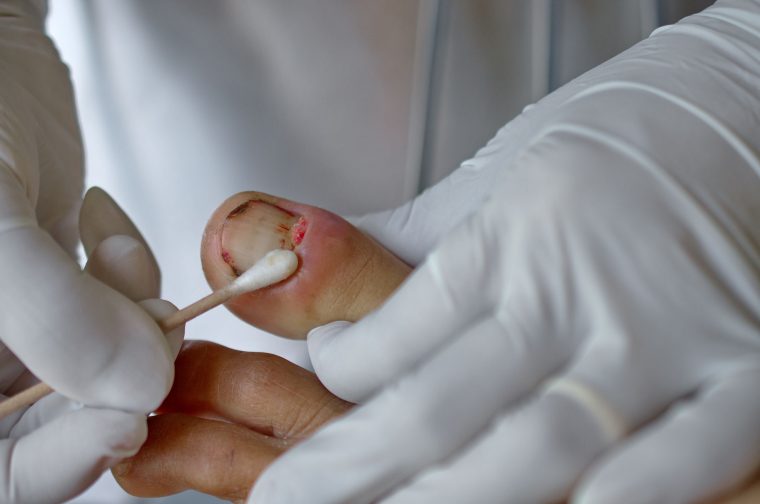What is a Hammer Toe Deformity?
Hammertoe is a progressive bony deformity where one or both joints of the second, third, fourth, or fifth (little) toes are bent. This abnormal bending can increase abnormal pressure over the bony prominences on the bottom of the foot as well as top of the joint.
Hammertoes get progressively worse over time. In the earlier stages, hammertoes are flexible where only soft tissues are onvolved in the deformity and the symptoms can often be managed with conservative treatments. But if untreated, hammertoes can become more rigid where bony adaptation takes a place and will require surgical treatments.

Causes
- Poorly fitting shoes — usually wearing shoes that are too short.
- High arched foot.
- Genetics.
- Bunion deformity.
- Rheumatoid arthritis.
- Underlying neurological condition such as Charcot-Marie-Tooth disease (CMT).
- Diabetes.
- Tendon imbalance due to faulty foot biomechanics.
Symptoms
- Pain or irritation when wearing shoes.
- Corns and calluses on the toe, between two toes, or on the ball of the foot. Corns are caused by constant friction against the shoe. They may be soft or hard, depending upon their location.
- Inflammation, redness, or a burning sensation.
- Contracture of the toe.
- In more severe cases of hammertoe, breakdown of the skin happens causing an ulcer.
Treatments
- Padding: Padding aims to reduce abnormal pressure over the bony prominences. Medicated pads are not recommended because they contain salicylic acid that can cause ulcerations.
- Footwear modification: Avoid pointy shoes, shoes that are too short, or shoes with high heels — conditions that can force your toe against the front of the shoe.
- Orthotics: custom orthotics may help control poor biomechanics of lower limb.
- Injection therapy: Corticosteroid injections are sometimes used to ease pain and inflammation caused by hammertoe.
- Medications: Oral nonsteroidal anti-inflammatory drugs (NSAIDs), such as ibuprofen, may be recommended to reduce pain and inflammation.
- Splinting/strapping: Splints or small straps may be applied to realign the contracted toes.
For more rigid and painful hammer toes that do not respond to conservative treatments, surgery is indicated.






